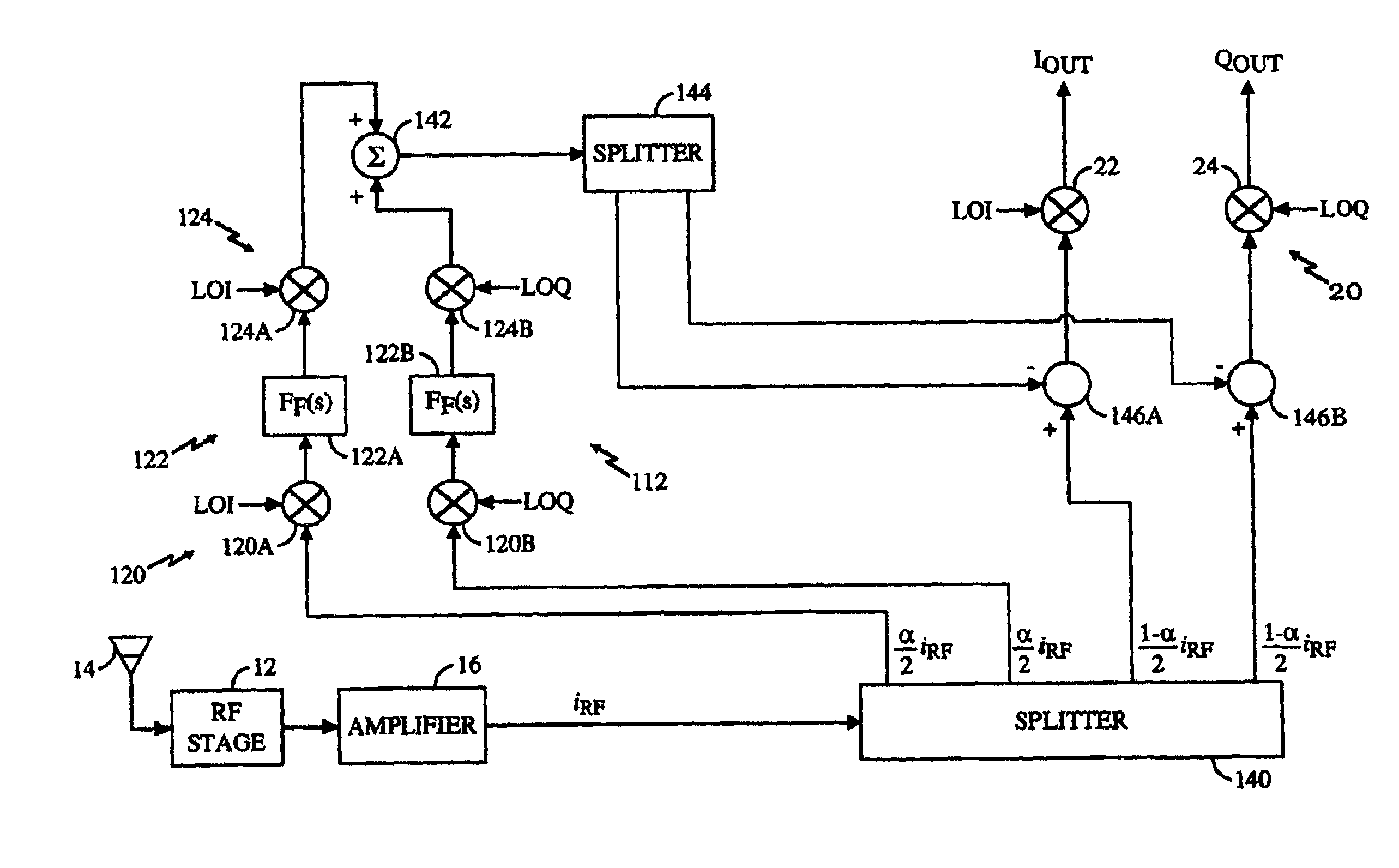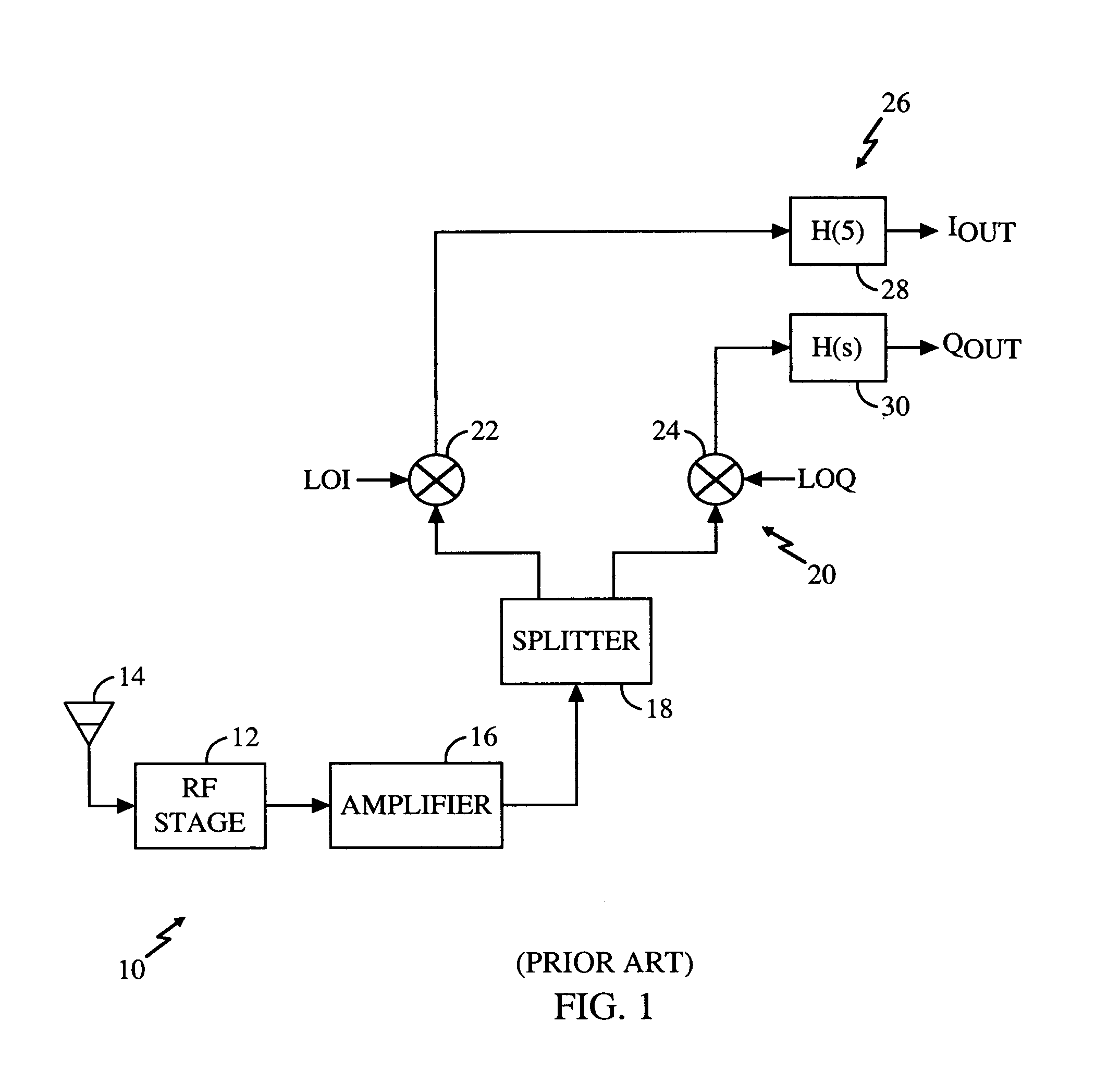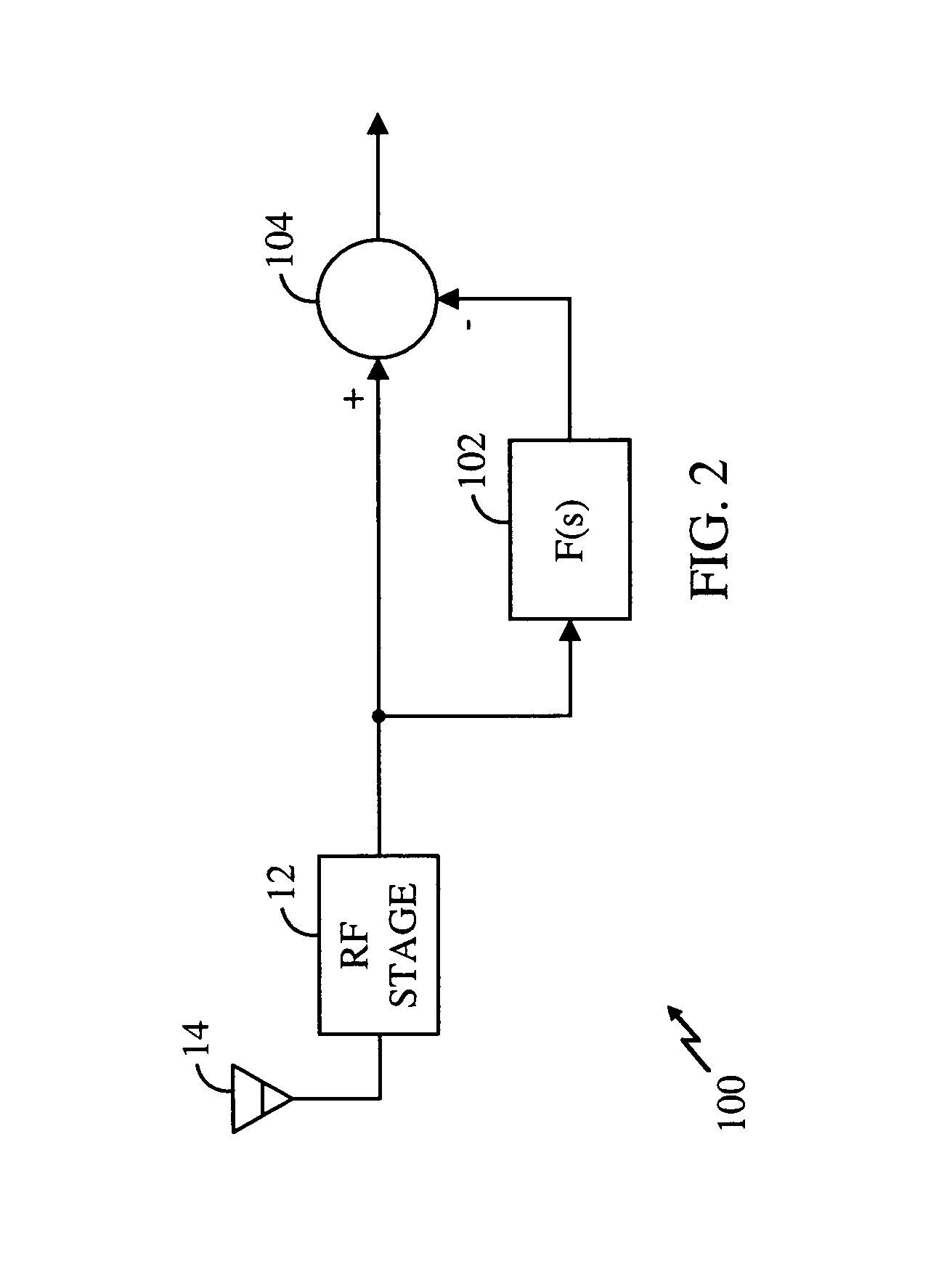Distortion reduction in a wireless communication device
a wireless communication and reduction technology, applied in the direction of electrical equipment, radio transmission, transmission, etc., can solve the problems of interference with the desired signal, increased interference between wireless communication systems, and possible interferen
- Summary
- Abstract
- Description
- Claims
- Application Information
AI Technical Summary
Benefits of technology
Problems solved by technology
Method used
Image
Examples
Embodiment Construction
[0029]The present invention is directed to a system architecture that actively cancels out the undesirable portions of the signals, which may be referred to herein as jammer signals. Although different implementations may be used, the underlying principle is best illustrated in the functional block diagram of FIG. 2 where a system 100 implements the present invention. The RF stage 12 and antenna 14 are conventional components that need not be described in greater detail herein. A filter 102 having a filter function F(s) serves to remove the desirable portion of the received signal. Details of the filter 102 will be provided below.
[0030]The output of the filter 102 is the undesirable jammer signal. The output of the filter 102 (i.e., the jammer signal) is combined with the output of the RF stage 12 by an adder 104. A positive input of the adder 104 is coupled to the output of the RF stage 12 while a negative input of the adder is coupled to the output of the filter 102. The adder 104...
PUM
 Login to View More
Login to View More Abstract
Description
Claims
Application Information
 Login to View More
Login to View More - R&D
- Intellectual Property
- Life Sciences
- Materials
- Tech Scout
- Unparalleled Data Quality
- Higher Quality Content
- 60% Fewer Hallucinations
Browse by: Latest US Patents, China's latest patents, Technical Efficacy Thesaurus, Application Domain, Technology Topic, Popular Technical Reports.
© 2025 PatSnap. All rights reserved.Legal|Privacy policy|Modern Slavery Act Transparency Statement|Sitemap|About US| Contact US: help@patsnap.com



